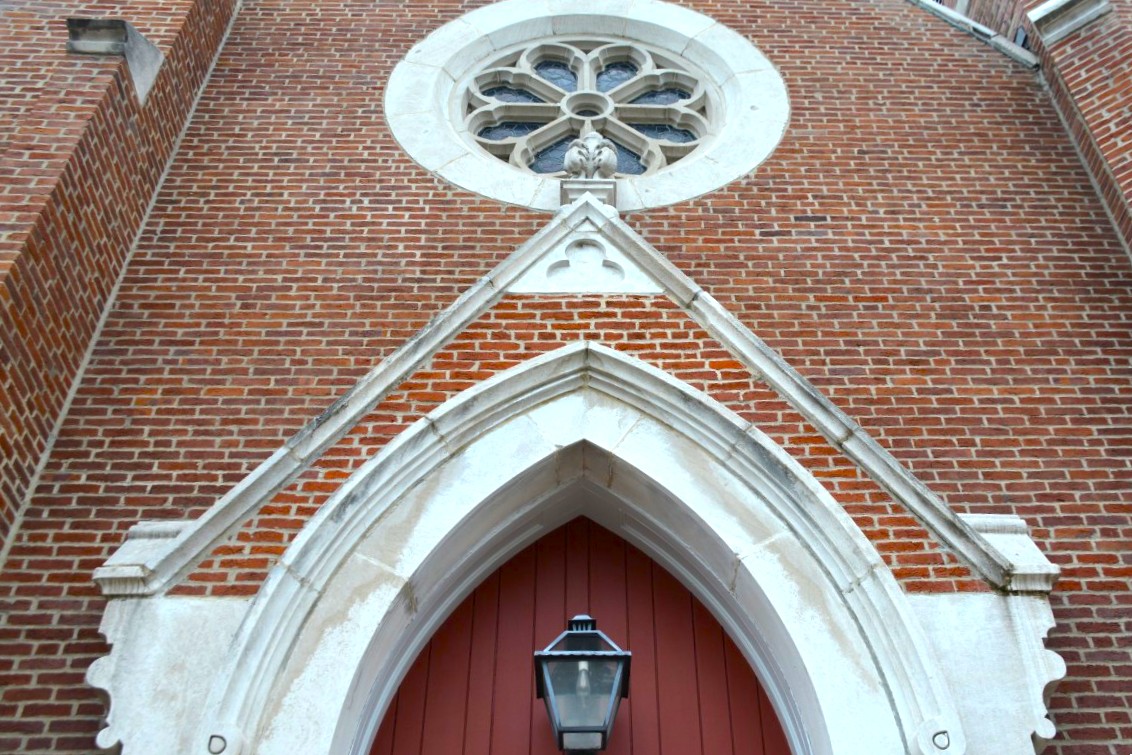HOPKINSVILLE, KY (CHRISTIAN COUNTY NOW) – Fully constructed in 1884, the current Grace Episcopal Church has been a fixture in downtown Hopkinsville for 141 years. The structure’s dramatic gothic revival style and historical significance previously landed it on the National Register of Historic Places, with the building still dominating the landscape decades later despite tornado damage and modernization.
“Of course I could be an adequate priest in any church, but I love architecture built to raise your thoughts high to God,” the Rev. Stephen Spicer told Christian County Now. “Something about the style of architecture in these gothic buildings just lends itself to that holy space.” He has been at the church for just over three years and has spent a lot of time absorbing every whisper of history presented in the walls of Grace Episcopal Church.
Grace Church was first established in 1832 in Hopkinsville, with this being their second location in the city which is still standing tall after all of these years. Overall, Grace Church is the fifth oldest in the state of Kentucky, having been established nearly 200 years ago.
100-year-old organ, stained glass
The old-fashioned Sunday school room upstairs in the main building prominently features a massive rose window that had been previously displayed at the front of the church. This is one of several intricate stained-glass designs that are scattered on the majority of the exterior walls, most of which are original. These almost three-dimensional works of art feature extremely saturated colors that capture Biblical moments and colorful designs.
Entering into the main sanctuary, the eye is immediately drawn up to the massive arched, wood ceiling which creates unique acoustics in the space. Over 850 organ pipes are built into the wall of the altar. The organ was installed in 1906 as a gift from John C. Latham Jr. in memory of his mother, Virginia. Although the organ has been updated over the years, the original structure remains.
The building has seen several changes since its construction, with additions and updates dating back to the early 1900s. The principal southeast corner tower was demolished by a tornado in 1978, and it was later reconstructed based on the original design.
The most recent additions occurred in the 1980s to accommodate more preschool and kindergarten spaces, along with offices, fellowship areas, and a memorial garden. Each external change through the decades committed to the original gothic design, seamlessly flowing with the exterior of the original church.
Historical connections are literally written on the wall in the main sanctuary, with names of parishioners who served in World War I and World War II displayed.
| RELATED STORY: Homeowners embrace the paranormal while renovating The Knight House in Hopkinsville
National Registry, brief history
The East Sixth Street church was designed by J. Rosenplanter of Clarksville, Tennessee. To this day, the building has unique features like a round stained-glass rose window above the entrance adorned with a Celtic cross, brick buttresses, arches, columns, and gables with detailed stonework. It was historically acknowledged by the United States Department of the Interior National Parks Service in 1982, with a detailed history and description submitted with the nomination.
“Grace Episcopal Church in Hopkinsville, Kentucky, was constructed in 1883-84 and represents the most academic local manifestation of Gothic Revival church architecture,” says the National Register. “The gable roof, brick buttresses, pointed arch openings trimmed with stone, and the corner tower evoke a distinctly Victorian English quality.”
Spicer has spent a lot of time absorbing the history of the church to share with the parish and the community. This personal intrigue was passed along as he walked Christian County Now through this special, historical space. He specified that he does not have a particular favorite spot at the church, and he believes every space ties together for a balanced flow.
“I’m one of these inquisitive people, I love the history of spaces, I love church architecture. I’ve just been doing my own investigation and seeing what’s been published through the church,” he said.
| FIND US ON SOCIAL MEDIA: Follow Christian County Now on Facebook


















